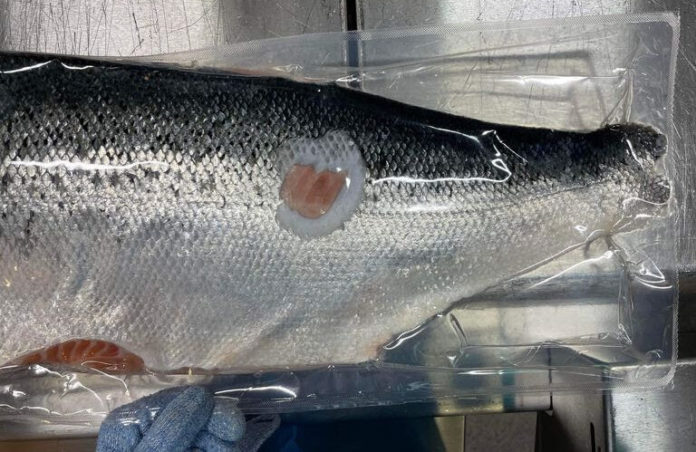Salmon that have been graded as “production fish” are a hot topic across the industry, but what exactly are “prodfisk”, and why are they proving so controversial?
Norwegian farmed salmon are graded as Superior, Ordinary, or Production based on quality.
Under Norwegian regulations, it’s illegal to export the lowest quality category (production) without first treating it in Norway by removing the skin or processing it into pieces or fillets.
After processing, these fillets can be sold as “Superior” or “Ordinary.” This law aims to maintain the reputation of Norwegian salmon as a premium product and to keep processing jobs in Norway.
Norway defends its policy as a way to protect local employment in salmon processing. However, there’s currently a labor shortage in Norway, making it challenging to manage the increased volume of superficially damaged salmon.
Breach of Contract: Mowi ‘production fish’ illegally resold into Europe
In November last year, Danish salmon importers questioned the Norwegian ban on exporting commercial fish at the European Commission, accusing Norway of protectionism.
There have been allegations against Norwegian companies for mislabeling production salmon as ordinary to expedite exports.
In November last year, a number of businesses in Norway were found to be illegally exporting farmed salmon with wounds and deformities, according the Norwegian Food Safety Authority (Mattilsynet).
The agency conducted 49 inspections, determining that in nearly half the cases compromised product was sold into the market in violation of government rules.
In 2021, roughly 10.5% of farmed salmon exhibited wounds and deformities, a number that increased to around 11.5% in 2022.
A guide to the world of salmon grading
Superior: This is a first-class product ideal for all purposes, characterized by a skin with sheen, no substantial faults, damage, or defects, and an overall positive impression. Features include no significant scale loss, no open or healed sores affecting appearance, no bruising or damage, intact belly membrane, natural shape, and minimal bleeding in specific areas.
Ordinary: This category includes salmon with limited external or internal faults but without significant issues that hinder use. Characteristics include no tissue damage under the skin or in the musculature, a natural shape, and possible minor issues like scale loss, skin damage on the upper layer, moderate bleeding under the belly membrane, and melanin deposits in the musculature.
Production: Salmon that don’t meet the criteria for Superior or Ordinary are sorted into Production. These include fish with characteristics such as sexual maturity, various types of sores, deformities (like deformed jaw or crooked backbone), serious handling defects (like extensive faulty cutting or discolouration), significant melanin in muscles, and substantial scale loss. These fish are typically supplied head-off and are regulated to ensure they aren’t sold directly to retail but to approved establishments where defects can be rectified.









